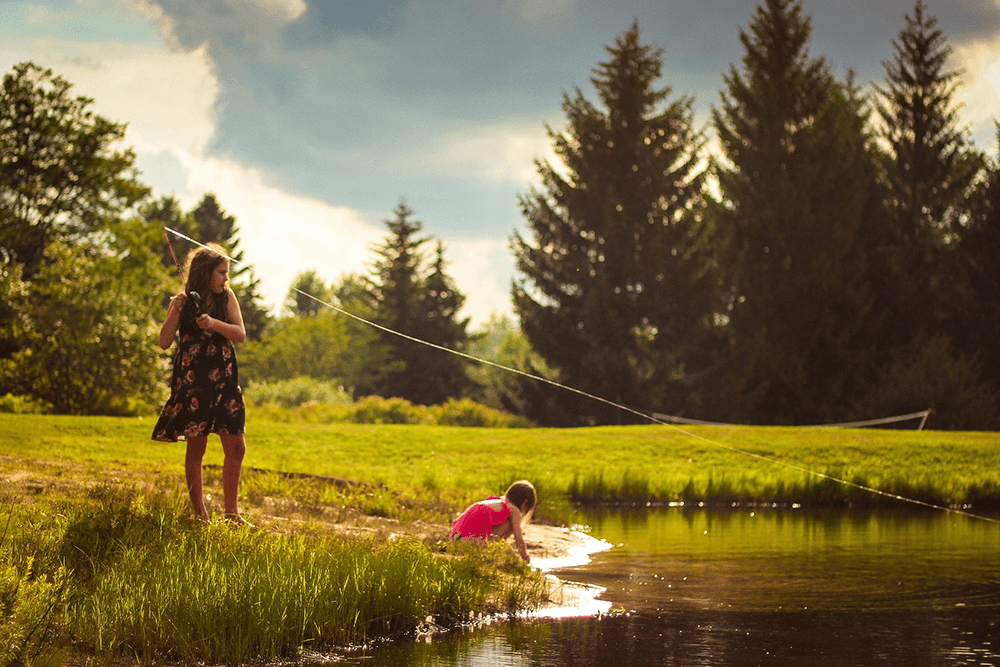
 Storage Tips
Storage TipsHow to Prepare Fishing Gear for Storage
Fishing rods are practically the definition of seasonal sports equipment. There are few places in the world where people will be able to go fishing every day. Almost everywhere will have a season that is the best fishing and a season that is not, although in the case of ice fishing that season may be reversed. This means that fishing poles need to be cleaned and put away at least once a year. The beginning of seasonal storage is an excellent time for a deep cleaning, especially since dirt and debris that is allowed to rest on the pole, reel, guides, and grip will have the potential to cause decay during the storage period. This is especially true if the poles are to be stored for a long time, moved, or left anywhere with changing climactic conditions.
Cleaning Fishing Poles For Storage
There are five major areas of the whole that will need attention before a fishing pole can properly be stowed away. These are the line guides, the pole itself, the reel, the line, and the grip.
The guides may be the smallest part of a fishing pole, but they might also be the most important. A pole without guides is useless, and a pole with damaged guides is headed for a broken line. The guides are the part that is the most vulnerable to damage as well. A season's worth of fish will tug and fight to get away from the fishing pole, and all that force is applied directly to the guide. The force of the line pulling and sawing against the guides has the capacity to knock them out of alignment, to twist them, or to abrade their surface.
Water, oils, and chemicals resting on them may cause rust or other damage as well. It is essential that the surface of the guide remain perfectly smooth, as any sort of irregularity in the surface can rip and tear at the fishing line. Faulty guides are usually what cause lines to break under pressure, and since this will usually be when a big fish is fighting at the end of the line, then it is safe to say that can happen at the worst possible moment. Sand the guides down with very fine sandpaper if there are any irregularities on them. It can be helpful to pass a cotton ball through the guide in order to test it. The tiny cotton fibers will catch on anything that is less than perfectly smooth.
The fishing line should be loosened. There is nothing good that will come of storing a fishing pole under tension. If the pole has been used in salt water, then the line should be removed entirely, soaked in clean water, and allowed to dry thoroughly in a separate location. The pole and the grips should be wiped down with a warm, damp cloth carrying white vinegar or some mild detergent. It should then be dried with equal care. The ferrules, or plastic sockets that hold the various pieces of the pole in alignment, should be given special attention. After clearing, cleaning, and drying them, rub some candle wax or parrafin on the joints. This seals out water, improves the fit, and prevents damage from friction. Lubricate the reel and other moving parts with a fishing gear lubricant obtained from a reputable supplier. Finally, address the grips. Cracks and holes in a cork handle can be dealt with by applying a mixture of wood putty and crumbled cork to the crevasses.
Preparing Fishing Poles for Storage
It is not necessary to keep fishing poles in a closed or sealed container. In fact, this may trap moisture and work to the detriment of the pole. Simply keep it stored somewhere safe and climate controlled. Poles should be stored either flat or straight up and down. It is bad for the pole to have it under the slightest pressure, as long days of storage will multiply small forces until the pole is bent out of true. If no convenient space on the ground can be found, the a pole can be hung from a hook or a string with security. Indoor or climate-controlled storage is a necessity.
Long-Term Storage for Fishing Poles
Long-term storage is much the same, though the importance of climate control and proper placement is multiplied. A pole leaned against the wall and left in storage for a couple years will often need to be thrown away. Either store them in a bag that holds them straight up and down, put them on a rack with proper center support, or place them on a flat surface large enough to contain the entire pole safely.
If the fishing pole is moved between locations then it must be protected. Be certain that it is not shipped with anything resting on top of it or placed at any angles that would bend it. The best plan is to put a number of fishing poles in a long, narrow, strong cardboard box.
We're Your Storage Solution!
Storage Rentals of America is your convenient self-storage solution. So come into our office or give our storage experts a call at 1-800-457-5678. Our call center is available 7 days a week and can help determine which storage unit size best fits your storage needs.



